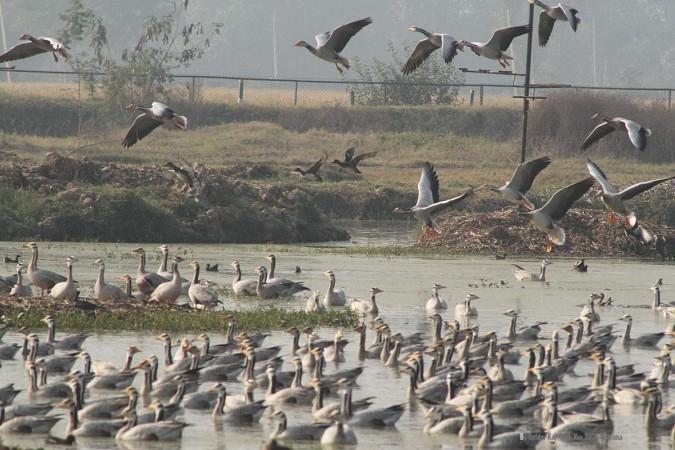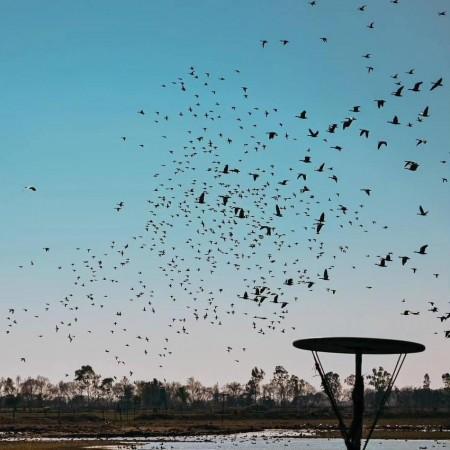
Amid the prevailing tension between India and Pakistan following Operation Sindoor, the famous Gharana wetland—located near the International Border (IB) in the R.S. Pura sector of Jammu and Kashmir—is buzzing with activity as the first batch of migratory birds from various parts of the world has arrived.
Every year, in a spectacular natural phenomenon, nearly 25,000 to 30,000 migratory birds, ranging from bar-headed geese to egrets, descend upon the Gharana Wetland Conservation Reserve from as far away as Central Asia.
"A flock of around 300 bar-headed geese—one of the world's highest-flying bird species, known for crossing over Mount Everest during migration—has arrived at the Gharana wetland to spend the winter season," Guldev Raj, member of the J&K Wildlife Board and founder of Himalayan Avian, told International Business Times.

"Their numbers are expected to rise steadily in the coming days. It has been a great delight for me to witness the arrival of the first batch of bar-headed geese every year since 2005. Each time, I have had the privilege of observing their graceful landing at the Gharana wetland," he said, adding, "Their population here typically ranges between 6,000 and 7,000 each year."

Located approximately 35 kilometers from Jammu, the wetland has become a haven for bird enthusiasts. Bar-headed geese and various other species from the northern hemisphere migrate to the region annually during winter.
Gharana Wetland—a semi-arid reserve along the International Border in the Suchetgarh area of the R.S. Pura sector—hosts more than 150 migratory bird species every winter, often presenting a mesmerising sight of nearly 50 species visible at once.

As nature's masterpiece unfolds, Gharana Wetland stands not just as a birding paradise but also as a delicate and thriving ecosystem.
Gharana and its surrounding agricultural landscape form an important habitat for numerous species of wild flora and fauna, both aquatic and terrestrial.
The wetland lies along two major migratory routes—the Central Asian Flyway and the East Asian–Australasian Flyway—and serves as a crucial wintering site for a range of migratory birds that travel through these corridors. Thousands of bar-headed geese flock here every winter.
Gharana enjoys the status of an Important Bird Area (IBA), giving it international recognition, and it is also considered a potential Ramsar site. The wetland further serves as an important centre for research and conservation education. With its enormous ecotourism potential, Gharana also holds the promise of becoming a sustainable source of livelihood for local communities.

"At least 57,000 bar-headed geese, 3,500 common teal, and nearly 40 gadwall and northern pintail, among many other species, have made Gharana wetland their temporary home for the winter. As temperatures plummet in Central Asia and other regions, these birds migrate here, where they find conditions suitable to spend three to four months," Raj said, adding, "Authorities have made elaborate arrangements for the guests."
These birds begin their journey from Central Asian countries and Russia as they struggle to find food due to harsh winters. At Gharana, they find abundant natural feed that sustains them for months—drawing them back year after year.

















